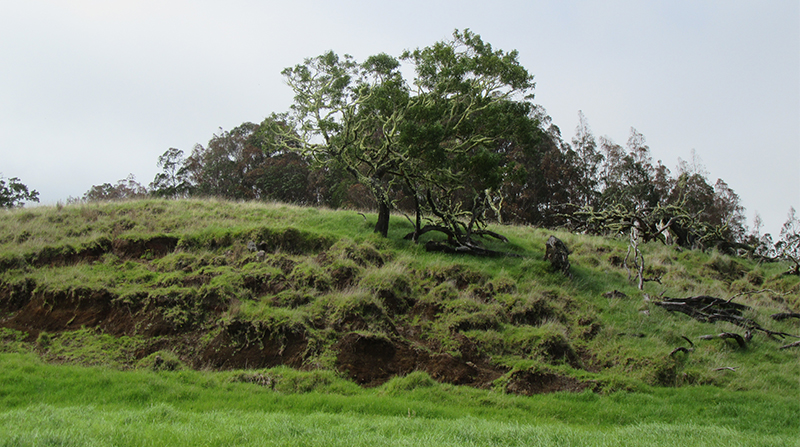

Tribute Trees. Credit: Jennifer Kester
It was a horrible year where everything fell apart. Foremost among them was the loss of my grandmother, with whom I was close.
While my grandma would have approved of the big turnout for her wake, it seemed more like a fun social gathering with attendees laughing and sharing stories. It clashed with the somberness enshrouding me. The funeral ritual, the well-meaning assurances that she led a long and wonderful life and being surrounded by her loved ones didn’t give me much comfort.
A month later, I still was numb about the ordeal. But I was set to visit Hawaii Island with Hawaiian Legacy Tours. The eco-pioneering company offers tree-planting tours that can serve as tributes. I went looking for an authentic local experience, but left with much more.
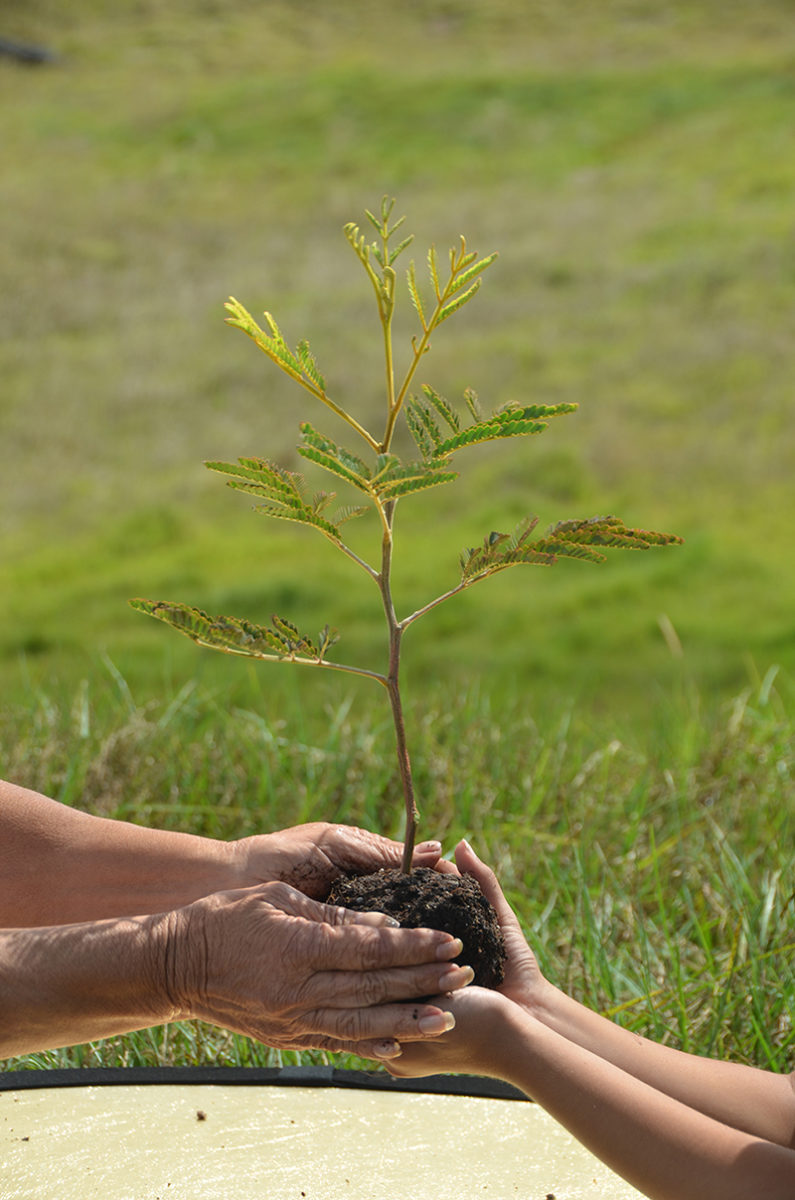
Planting Seeds of Hope. Credit: Hawaiian Legacy Tours
The Legacy Forest
About 34 miles north of Hilo, the 1,200-acre Hawaiian Legacy Forest sits on hallowed ground. It used to be a koa forest owned by Kamehameha I, Hawaii’s first king. The land was cleared almost a century ago for farming and ranching, and it was depleted of koa, a tree unique to the state that produces a rich, dark red timber.
Led by the nonprofit Hawaiian Legacy Reforestation Initiative and sustainable forestry company Hawaiian Legacy Hardwoods, the restoration began in 2010, when the first “legacy tree” (meaning, it won’t be harvested by Hawaiian Legacy Tours) was planted. The tour component formed in 2014, allowing visitors to pitch in with the reforestation.
More than 400,000 king koa and 24,000 royal sandalwood trees have been planted at Kukaiau Ranch along the northern Hamakua Coast, forming the first legacy forest of its kind worldwide.
There are ambitious plans to expand this effort; the goal is to reforest 1.3 million trees, one for each person in the state. In the spring, a second forest site was acquired, the 700-acre Kahua Ranch, which is about 32 miles from Kukaiau. And the next target is a legacy forest in Oahu.
If you stay at Forbes Travel Guide Five-Star Four Seasons Resort Hualalai, you can help. The hotel participates in the legacy program to offset its own carbon footprint. It charges an optional $8 daily fee to all rooms that’s donated to the cause. The hotel also curates a special experience with Paradise Helicopters, where a private chopper will whisk you away to the pristine legacy forest, where a gourmet meal and champagne await.
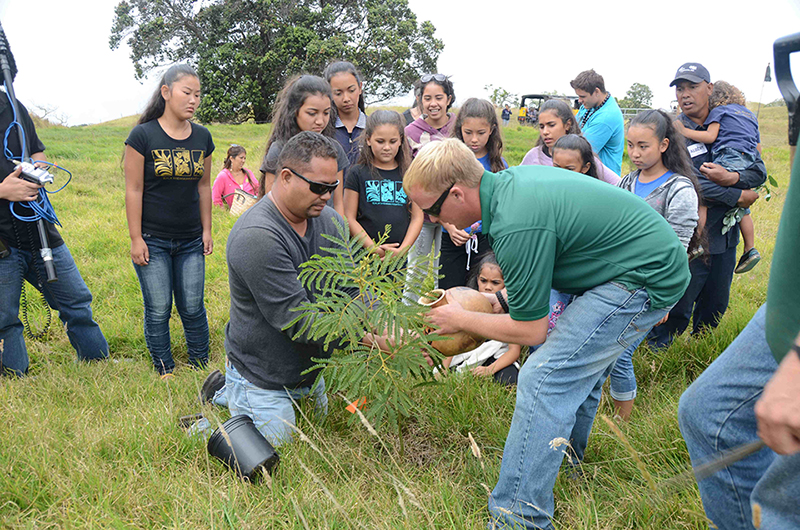
Growing for Future Generations. Credit: Hawaiian Legacy Tours
Leaving a Legacy
I pulled into Umikoa Village, a sleepy area of only about 14 homes, and found the welcome center, which resembles a cozy home. After a quick orientation and selecting my koa, I climbed aboard the yellow ATV to start the 3.5-hour tour.
My guide Robert Mailani Bethea drove us through the sprawling ranch, which opened in 1885, and gave a thorough history of it and the legacy program. As the forest matures, he said, they’ve seen a return of endangered species. Two native butterflies — the koa, with its blue-topped, turquoise-bottomed wings, and the dark-orange Kamehameha — have fluttered to the property. And on our trek, we spotted two Hawaiian hawks, which can only be found on the Big Island.
“It’s like you’re creating a community,” Bethea said. “The trees live together, thrive together, animals come in and things go to back to the way they used to be. It’s more than just planting a tree.”
The uphill ride is bumpy but scenic — Bethea led us through fragrant eucalyptus groves and past grazing cattle. We stopped off to smell the sweet sandalwood flowers and taste the tree’s prized nut, and to get a dreamy view from “the lookout,” the highest point of the property with an elevation of 5,100 feet.
We also paused at what the staff calls “the canoe tree,” named as such because you can make a narrow boat from one of the 150-year-old tree’s massive branches. Near here, we set out to plant my koa.
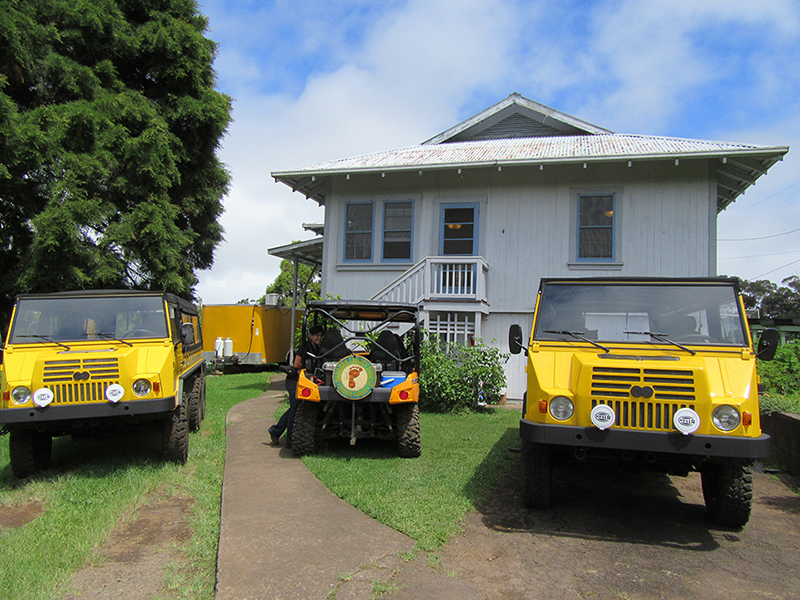
The Welcome Center. Credit: Jennifer Kester
Once you park the ATV, it’s quite tranquil. You hear the wind ripping through the thick grass blades and gnarled branches. The scene is saturated with Kelly green. And there’s no one else in sight.
I crouched next to the hole that was to be the new home for my seedling, and Bethea talked me through how to properly remove it from the container and pack the soil in around it. As I dug into the dirt, another staff member videoed me and asked, “Jennifer, who are you planting this tree for?” I told her about my grandmother Marion Kester and choked up a bit.
After the planting, I cupped my hands around the koa while he poured water into them. I was giving the acacia koa its first drink, and Bethea said it was a chance to pass on mana, or positive energy and thoughts, into my grandma’s tree.
Afterward, we returned to the welcome center for a homemade lunch. I savored the hot Italian biscuits with caramel-flavored koa wildflower honey (produced in the legacy forest) with vanilla-orchid tea, and then enjoyed a hollowed-out papaya with a large scoop of curry chicken salad sprinkled with dried pineapple and macadamia nuts. The chocolate chip and oatmeal raisin cookies were a comforting end to the day.
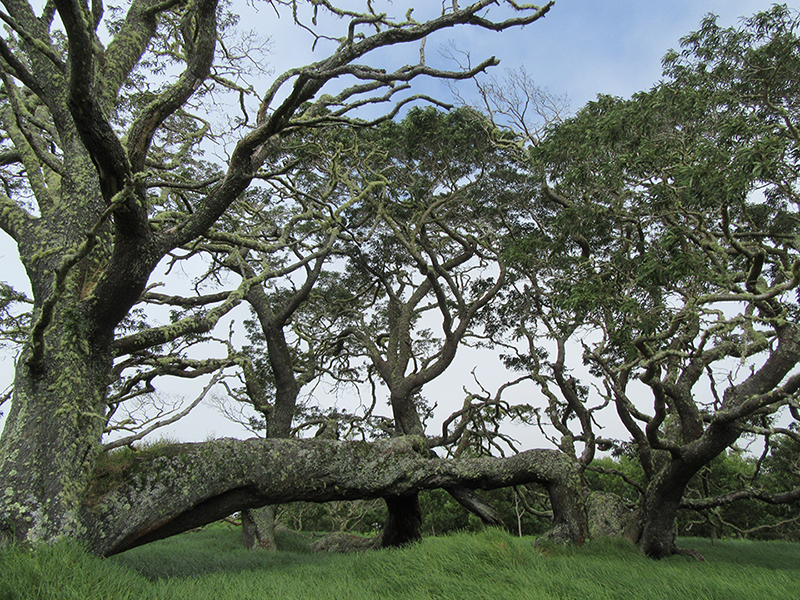
Seeing the Forest and the Trees. Credit: Jennifer Kester
Saying Goodbye
The ceremony gave me some closure. It’s gratifying to create an intimate, beautiful living memorial that also betters the planet. In a 50-year span, one legacy tree will generate 13,000 pounds of oxygen, absorb 8,200 pounds of carbon dioxide and recycle 200,000 gallons of water.
Bethea said that some people bring the ashes of their loved ones and pour them around the koa. Full of calcium, the ashes are absorbed into the tree and help it grow, which imbues the tribute with even deeper meaning.
The experience doesn’t end when you leave the Big Island. You receive a certificate with GPS coordinates for your tree, so that you can watch it grow virtually for years to come. Each tree also bears a tag with radio-frequency identification technology, so its unique characteristics can be monitored (you get those codes, too, and can follow along through Hawaiian Legacy’s website). This information also is used to build an extensive database on native Hawaiian trees, which will enable the forest to thrive.
After your journey, Hawaiian Legacy Tours sends you a personalized video email to say thank you and a link to your photos and videos.
The experience gave me some peace. It’s comforting to know that the koa tree will stand tall and sturdy, even after my own passing. I imagine my grandmother smiling down on her tree now.
